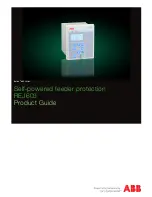
HG3555A/42306 Portable Power Unit
Greenlee Textron / Subsidiary of Textron Inc.
13
4455 Boeing Dr., Rockford, IL 61109-2988 815/397-7070
Battery
Battery Maintenance and Replacement
Check battery electrolyte level at least once a month.
Stop power unit engine when checking battery electro-
lyte level. If electrolyte level is low, fill to required level
using distilled water only. Clean battery terminals and
cable clamps when required. After cleaning, coat battery
terminals and cable clamps with grease or other suitable
product to reduce corrosion. When battery replacement
becomes necessary it is recommended that replacement
battery should meet or exceed original battery specifica-
tions; amps, cranking power, etc.
Pneumatic Tires
Inflate power unit tires to the recommended pressure
printed on the sidewalls of the tires. Do not exceed tire
manufacturer’s recommended maximum pressure
printed on the sidewalls of the tires or rim
manufacturer’s recommended maximum pressure
stamped on the rim, whichever is lower.
Troubleshooting
Stop engine when checking battery
electrolyte level. Do not check or fill
battery electrolyte level near an open
flame, sparks, or when smoking.
Battery fumes are flammable and
explosive, and if ignited will result in
severe injury or death.
Before You Begin
1.
Any tool used with this power unit must be an
Open-Center system type tool.
2.
Verify that the pressure and return hoses are con-
nected properly to the power unit and tool ports.
3.
Power unit reservoir must be filled to FULL level with
hydraulic fluid.
4.
Start the power unit hydraulic oil flow. All separate
shut-off devices must be opened (on/off valves, etc.)
5.
After verifying all of the above, check the tool to see
if it operates.
If the tool does not operate, it will be necessary to
pinpoint the power unit, tool, or hoses as the prob-
lem area. The following steps will help to determine
the problem area.
Determine the Problem Area
1.
Stop the power unit hydraulic oil flow. Disconnect the
existing tool from the hoses and power unit.
2.
Connect a known working tool to the hoses and
power unit. See the tool’s operators manual for
correct hook-up procedure. Start the power unit
hydraulic oil flow.
If the known working tool operates, the problem is in
the disconnected tool. See the tool operator’s
manual for troubleshooting.
If the known working tool does not operate, the
problem is likely to be in the hoses or the power unit.
Proceed to Step 3.
3.
Stop the power unit hydraulic oil flow. Disconnect the
existing hoses from the known working tool and
power unit.
4.
Connect a different set of hoses to the known
working tool and power unit. Start the power unit
hydraulic oil flow.
If the known working tool operates with the different
set of hoses, the problem is in the disconnected
hoses.
If the known working tool does not operate,
the problem is in the power unit. See the Trouble-
shooting charts in this operator’s manual.
Maintenance (cont’d)
When working on or around the battery:
• Remove jewelry, wristwatches and any other
conductive items. The current produced by the
battery can cause severe burns.
• Wear eye protection and gloves and handle the
battery carefully. Contact with battery acid can
cause severe burns or blindness.
Failure to observe these warnings could result in
severe injury or death.








































